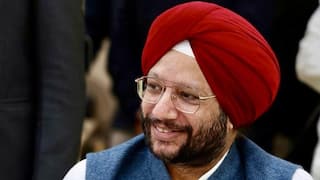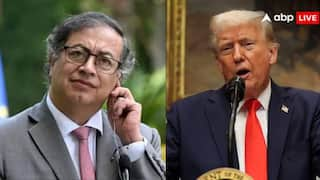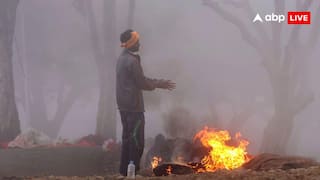India And Russia: Time-Tested Strategic Relationship Navigating Uncertain Waters

Six is a unique number in relations between India and Russia!
Six times India abstained on UN resolutions against Russia over the last one year or more, despite pressure from the West.
Six times the USSR used its veto to rescue India at the UN, between 1957 and 1971. When times get difficult and uncertain, the two nations have resolutely stood by each other against attempted isolation at this multilateral forum.
The pandemic in 2020, military operations in Ukraine and heightened tensions in the Indo-Pacific region — the last three years have been tumultuous. Vaccine ‘apartheid’ during the Covid pandemic shook the faith of the Global South in its hopes to receive any support by developed nations (the Global North). Indeed, the chimera of global equality and equitable growth opportunities has faded. Human rights as a diplomatic pressure tool, to be used selectively, is now recognised as a skewed approach to international relations, even as the debate on alternate forms of governance deepened. Weaponisation of economies has permanently altered the (so-called) inevitable path to an inter-dependent globalised trade system. Bretton Woods institutions are seemingly powerless, weakly manoeuvring their way through great power contestation, in obvious attempts to survive or remain relevant. Seemingly robust global supply chains have been suddenly disrupted, with nations scrambling to “de-risk” and improve resilience in trade strategies. The current global order is in the throes of a long-drawn process of re-ordering, as all nations, big or small, re-evaluate their positions in realigned groups.
Yet, uncertain times throw up big opportunities; and strong relationships get an opportunity to grow. Will Russian and Indian relations enter a phase of re-evaluation towards growth, or fall into ferment? Time will tell.
President Putin visited India in October 2000, when India and Russia signed the declaration of “Strategic Partnership”, enhancing levels of cooperation in “almost all areas of the bilateral relationship” viz political, security, defence, trade and economy, science and technology, and culture.
In 2010, it was elevated to a “Special and Privileged Strategic Partnership”. Ukraine has put this relationship to test, and India has proved to be a staunch support to Russia, even as it believes that boundaries between nations need to be respected, and issues resolved by all other means. PM Modi’s statement that “today is not the era of war”, needs to be seen in this context.
Multipolar world order
There is a notable convergence on the pressing need to usher in a multi-polar world order, which allows a say to other major global powers, and emerging players despite being part of the Global South. The containment strategy of proxy players in Ukraine against Russia, has in the short term succeeded in unifying Europe, increasing its expenditure on developing defence capabilities with greater contribution to NATO coffers. This may not last over the long term, as many of them could return to depending on Russian resources and energy supplies, even if indirectly. However, the crisis and broad swathe of sanctions by the West and its allies, is bound to take its toll on the Russian economy and military. As Russia turns its focus to Eurasia, the “heartland” and its Asian partners offer opportunity.
The US and its western allies view India as a balancer in the Indo-Pacific, creating an alternate power centre to China in a regional context, and wish to see its involvement in a possible military confrontation. While India is in the process of resolving its border issues with China, it perceives its national interest in keeping away from any direct military confrontations over Taiwan or the South China Sea. Border issues with China are dealt under bilateral arrangements.
Multilateral Fora
Apart from the strongly institutional interaction between them, Russia and India participate in a number of larger groupings; most intimately at the SCO, BRICS and the RIC. A number of points of convergence emerge between the two nations.
SCO. SCO has huge implications on trade possibilities in Eurasia. Under its aegis, the North-South Corridor from Moscow to Mumbai, INSTC and Vladivostok-Chennai Sea Link, if operationalised, present possibilities as emerging corridors of prosperity. The SCO also enables India to raise anti- terrorism issues, which sooner than later affect all participants. Days ago, in May 2023, at the Foreign Minister’s meeting in Goa, India’s Mr Jaishankar reminded the members that terror was one of the original mandates of the SCO and that “state actors cannot be allowed to hide behind non-state actors” – directly alluding to Pakistan. A collective approach would be beneficial to all members, rather than opportunistic leveraging of this double-edged sword by countries like China who turn a blind eye to epicentres of terror in Asia. A common anti-terror agenda is inevitable, if these groupings are to engage in meaningful interaction.
BRICS. BRICS is a vibrant grouping in which all five states are also members of the G20 group.
Representing 41.5% of the global population, and 32.5% of global GDP (PPP), it is the closest rival to the G7, now seeking to represent the voice of developing nations. After the first formal summit held in Yekaterinburg in 2009, the idea of a new global reserve currency was mooted, resulting in a fall in value of the dollar. The current refrain of “de-dollarisation” is bound to have a similar impact, although contemplating a de-coupling from the dollar in the mid-term is not practical. However, unprecedented sanctions against Russia and weaponisation of the dollar have exacerbated the need to reduce dependency on a single reserve currency. BRICS nations will focus on the issue during the next summit in South Africa in August 2023. 14 countries have expressed their desire to join the BRICS, out of which 7 will be considered during the August summit. Clear guidelines will have to be followed, to ensure coherence in the group.
RIC. While SCO and BRICS have gained traction, RIC has languished, mainly due to divergences between India and China on their border issues. The recent SCO meeting was also an opportunity for the foreign and defence ministers of India and China to meet on the side-lines. The Chinese side sought to project the border situation as “generally stable”, and that everything else could continue between the two countries; India categorically stated the border situation was “abnormal”. Until the disengagement process is carried forward, and peace and tranquillity remain disturbed, other activities cannot be considered under a pretence of normalcy. China’s possible strategy to bleed the economy of India and tire out its army by enforced deployments along its 3,500 km long Line of Actual Control (border) over prolonged periods (akin to the breakup of the USSR) is not only misplaced but also counterproductive.
In its current predicament caused by the Ukraine crisis and broad swathe of sanctions by the West, Moscow is already being shown as Beijing’s junior partner seeking economic and possibly military assistance. Russia, as the third player in this trilateral, has a weighty role to play in pressing upon the two sides to resolve issues bilaterally, in the larger interest of RIC becoming a Eurasian multi-pole. This is predicated to the understanding that all three players in this trilateral enjoy equal status. China needs to understand that any perceived tilt of India towards the US by joining the QUAD does not guarantee India’s military participation in the South China Sea. India is acutely cognisant, as are South Korea and Japan, that they do not wish to be the next Ukraine-like proxy of any power struggle over Taiwan in the Indo-Pacific.
OPINION | G20 Done. Joint Statement Hailed. Time Now To Focus On India’s North And West Borders
Trade And Technology
Currently the fifth largest globally, the Indian economy with a projected annual growth rate of about 6% is likely to be the third largest by 2030, as per an EY Report of January 2023; even as fears of recession loom over other major economies. India is not only digitally enabled across its 1.4 billion population, it is now poised to be a manufacturing powerhouse in the next few years, as the Make in India policy is enforced. Its internal demand is enough to drive growth and sustain the economy. Two thirds of India’s energy consumption will come from renewable sources by 2030. Massive investment opportunities await those who do business with India.
Technology. Western businesses have aggressively begun to look for joint ventures and co-production arrangements. Russia has traditionally been India’s biggest defence equipment supplier. It was earlier pegged at 68%, now down to around 59%, and likely to go lower unless delayed deliveries are expedited despite the Ukraine crisis. In keeping with government policy, Indian defence industry is looking for self-reliance, and banking on technology transfers, collaborative R&D (such as the Brahmos missile), co-development and co-production in state-of-art technologies. Dependence on any one country is not an option. Economic interests coupled with geostrategic convergences will define its path. France and the US are possible technology and manufacturing partners, provided their overtures to India are sincere.
Yet, Russia must note India is a proven reliable long-term partner in maintaining IPs and technology transfer arrangements, and must be trusted. Cooperation in licensed production and co-development has been fruitful (Brahmos missiles, nuclear power generation, T-series tanks, frigates and corvettes, fighter aircraft etc are good examples), but these now need to be taken to the next level of collaborative R&D in state-of-art technologies as the fifth-generation stealth aircraft and frigates, metallurgy, high performance engines, air independent propulsion technologies for naval vessels and such like.
There is a need to find faster mechanism to synergise Russian and Indian requirements: the old slow processes enshrined in the IRIGC-TEC (technology, economic, social and cultural) and MTC (Military Technical Cooperation) need to be revised and made more business-friendly and agile. Should there be any delays in these processes, the close defence dependence relationship will drift apart, as India will be forced maintain its operational readiness by falling back on alternative sources available with the West.
Currency. Issues like the rupee-rouble trade arrangement need to be addressed. While India benefits from the low cost of oil from Russia, the latter benefits by earning revenue despite the sanctions regime. Even as the balance of trade is tilted towards Russia, it needs to consider investing the same rupees back into Indian companies to establish a win-win paradigm. Mr Lavrov is on record in the Indian press during the SCO Meet in Goa, that Russia has little use for the rupees accumulated due to the sale of oil to India over the last year. Solutions to this lie in encouraging Russian business investments in India and benefitting from their export to Russia to offset the trade imbalance, or exporting to third countries and sharing profits in those alternate currencies. Indian business could be encouraged and incentivised to cater to Russia’s specific import requirements, to reduce the trade imbalance, putting the rupee surplus with Russia to good use. This could also be done by re-balancing trade or goods imported from other countries currently. Trust and goodwill are great instruments to maintain the value of relationships and mutual interests between friendly nations, through innovative solutions.
It may be quite some time before a common BRICS currency is floated, duly counter-weighted against their five-member country currencies. The proposal to trade in each other’s currencies at the earliest may be feasible and holds merit. It is to be understood that the dollar is not going away as a reserve country for a while, but creating a blockchain-based common currency may be feasible in the medium-term.
Reviewed Nuclear Deterrence
The Ukraine crisis has changed the existing nuclear deterrence paradigm. Forward deployments of weaponised vectors on the western borders of Russia have drastically reduced reaction times and raised the chances of a nuclear conflagration, re-starting the nuclear arms race, and raising the spectre of use of tac-nukes and dirty bombs. Its implications have been felt not only in Europe, but also in the Indo-Pacific, as western allies review the efficacy of the US umbrella, and their stakes in a possible armed conflict over Taiwan. A survey in South Korea, almost a referendum, reflects the mood of the people: almost 70% of the youth feel the need to develop an indigenous nuclear deterrence program. India faces two nuclear-armed neighbours as well and has much to learn from the experiences of its partners. Intelligence sharing over safety of nuclear assets in other countries would create greater levels of confidence and build deterrence capabilities.
Conclusion
Russia and India share a strategic relationship built on trust over a period of time. The current uncertain times call for strong efforts to retain this trust and build pathways to take forward the mutually beneficial relationship to a new level.
The author is a Distinguished Fellow with the USI of India, and a Mentor at the National Defence College. This article first appeared on the website of The Valdai Discussion Club, and has been republished with permission.
[Disclaimer: The opinions, beliefs, and views expressed by the various authors and forum participants on this website are personal and do not reflect the opinions, beliefs, and views of ABP News Network Pvt Ltd.]


























